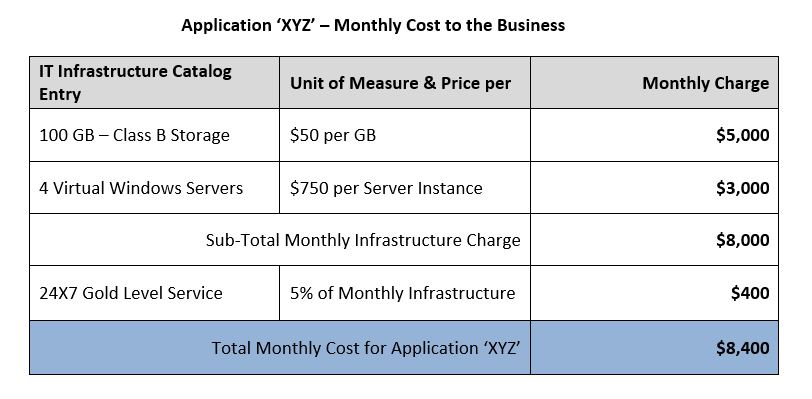1. What does it mean to be financially transparent with IT costs?
Today more than ever, companies face greater pressure to improve the bottom line. While tried and true methods have yielded the intended results, leading edge companies have initiated a variety of IT cost saving programs. Some of these are formal while others less so. Regardless of program size or maturity, today’s top companies have recognized the untapped efficiency that lies within their own IT organizations.
An IT cost-savings program or a more comprehensive IT transparency effort is achievable despite the current state. More specifically, an IT cost-savings program can often be quite successful without any of the following prerequisites:
- Dedicated full-time resources
- Clean, defect free data
- A significant outlay of budget dollars
With that stated, all successful IT financial transparency or IT cost-saving programs share the same commonality in terms of the following:
- Clear, specific and quantifiable goals shared by IT, Finance and sometimes the Business
- A baseline
- Accurate measurement of progress at predefined intervals
- Cross-organization commitment and collaboration
So let’s say you have the must-haves, what does it take to get the journey underway? What does it mean to be financially transparent with IT costs?
The common tenets of all successful initiatives mentioned above summarize ‘what’ is needed. The ‘how’ involves subject matter expertise with hands-on seasoned experience that spans everything from strategy to weed pulling. All successful journeys have the following:
- Understanding that the expense intricacies of operating an IT environment. Not just the infrastructure, but the human capital component and entitlement, vendor relationships, leasing and software licensing to name just a few
- Continuing to raise the bar once baseline is quantified
- Clearly identifying areas where the business can partner to help pull the lever
It isn’t enough to forecast a 30% virtual server utilization will deliver a dollar-for-dollar savings to the business.
Moving to a more virtual environment will directly impact the bottom line, but how will that green dollar savings trickle down to the business consumer?
What are your competitors seeing from similar exercises?
These sample questions lead to the next link in the chain – explaining the cost AND the savings in clear business vernacular. Most IT leaders tend to express their efforts using industry-specific vernacular that isn’t always understandable to the business consumers.
2. Do your business partners understand their IT spend?
While IT leaders carefully prepare, manage and understand their budgets, they occasionally fail to translate their cost drivers into something that makes sense to their business partners and consumers. IT-specific terminology isn’t in the DNA of the business. Generally the business knows what they consume and they most often refer to it as an application or system. Clearly, they also understand workstations, email accounts and telephony. But how well do they understand the drivers that directly impact the cost of the applications?
One facet of an IT financial transparency program is to define, measure and chargeback the cost of a business application in terms and metrics that are cross-organizational independent – meaning understandable and defendable by the business consumer.
Just like our earlier virtualization example, it isn’t sufficient to simply report that the cost of application ‘X’ is $10,000 per month. A much better way to communicate the cost of that business application is to measure, recover and report using metrics and unit prices that everyone can understand. Consider the following example:

We can all relate to a monthly bill of services and while this is a relatively simple example, it doesn’t need to be much more complicated.
To be IT financially transparent means being consistent, defendable and straight-forward about what is consumed with those who consume it. Why shouldn’t the consumers of IT products and services understand what they’re buying and how much of it they’ve bought? Haven’t we all considered dropping or curtailing an ‘a-la-carte’ item from a monthly bill? The same freedom should be afforded to IT consumers. This also is what it means to be financially transparent.
 Another equally important facet of a strong program is entitlement management. Too often, we lose sight of inventory and how that inventory relates to entitlement. Entitlement management isn’t just applicable to tangible inventory. Software licensing also introduces a real opportunity for cost savings. Even if your organization relies on discovery as an aid to software licensing compliance, there is always room for improvement. For example, reviewing and comparing HR data against contracted seat licenses may quickly reveal an opportunity for renegotiation. The same can be said for evaluating internal application accessibility.
Another equally important facet of a strong program is entitlement management. Too often, we lose sight of inventory and how that inventory relates to entitlement. Entitlement management isn’t just applicable to tangible inventory. Software licensing also introduces a real opportunity for cost savings. Even if your organization relies on discovery as an aid to software licensing compliance, there is always room for improvement. For example, reviewing and comparing HR data against contracted seat licenses may quickly reveal an opportunity for renegotiation. The same can be said for evaluating internal application accessibility.
3. Can you quickly and accurately identify the applications that consume the most resources?
One long-term benefit of undertaking the IT financial transparency journey is the transformation that will occur throughout your organization. The message spreads quickly; particularly among the business users of internal IT and eventually, financial transparency vocabulary will become second nature.
This all leads to common ground for both the provider and the consumer of IT services and it enables the business to communicate in terms of their view of consumption, typically applications or systems.
When implemented with business consumers in mind, a financial transparency program will typically enable quick identification of application expense. This in turn is the catalyst that drives more in-depth conversations around consumption, SLAs, backup and restore functions and more. Soon, IT Managers are having meaningful dialogue with their business partners about ways to reduce cost and even improve performance.
A common discussion platform that bridges the gap between provider and consumer creates an environment of trust and partnership that can yield significant results in terms of lower costs and improved efficiency.
Next best reads for you
- News VMblog: 2023 Predictions for IT Expense Management
- Webinar On-demand How IT Should Adjust for the Next Normal

